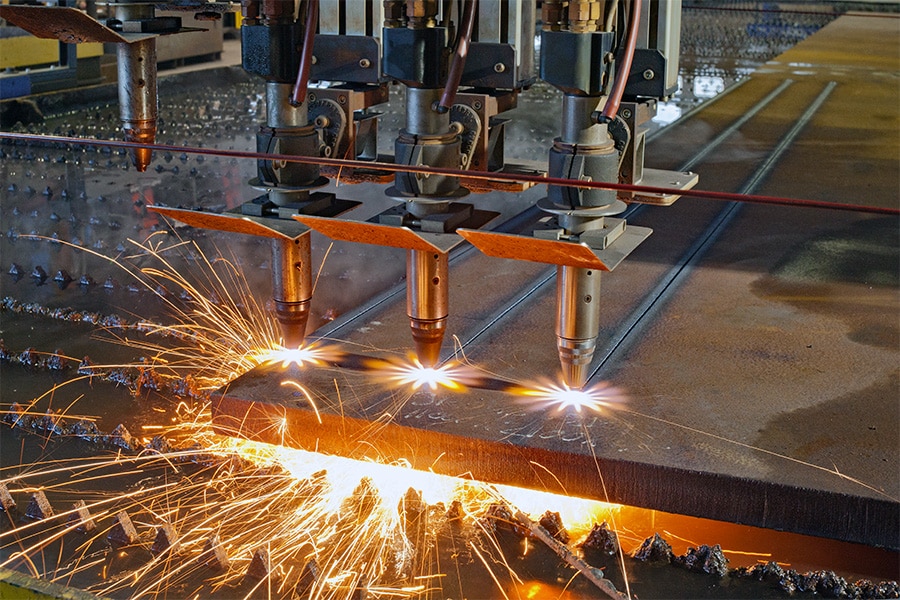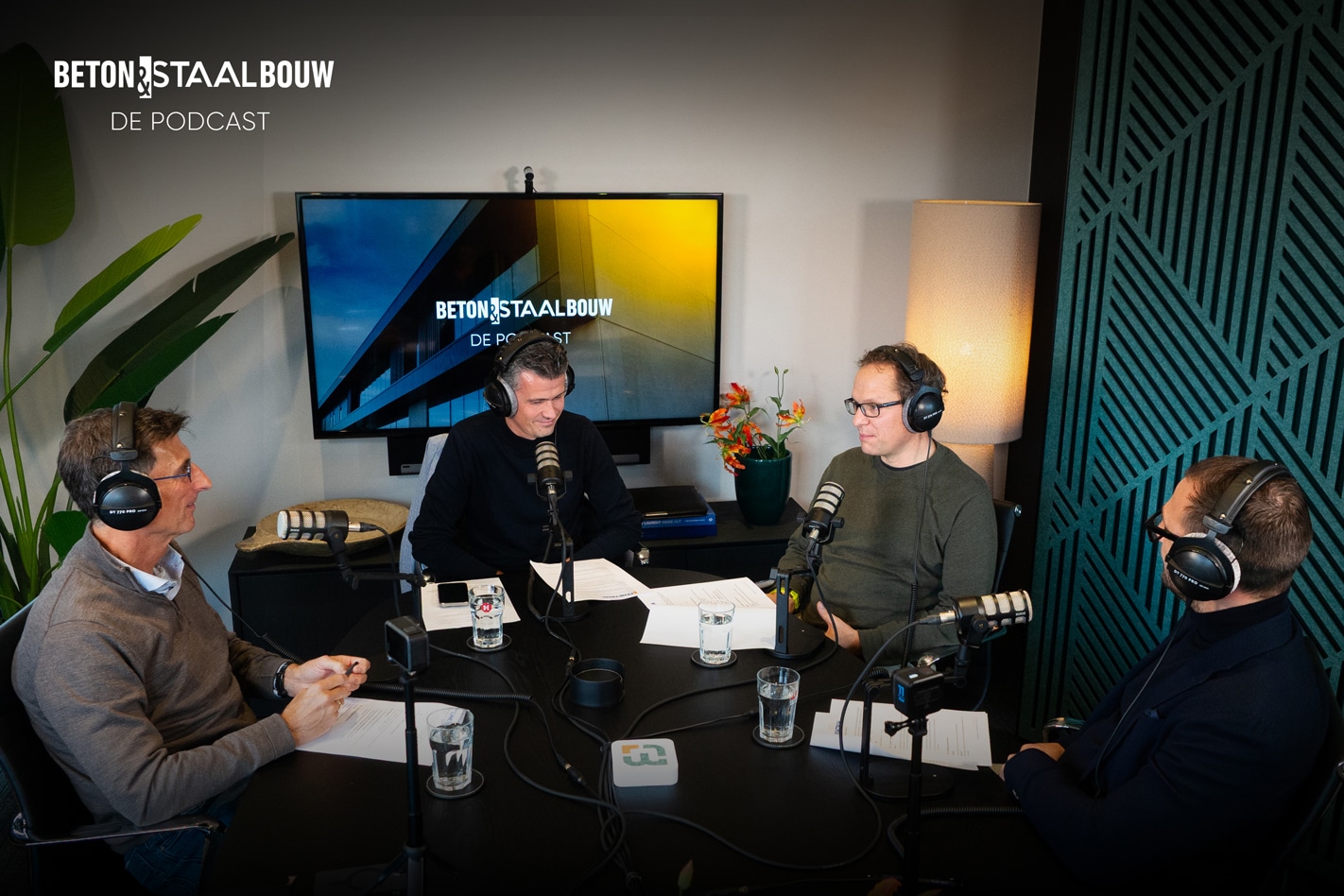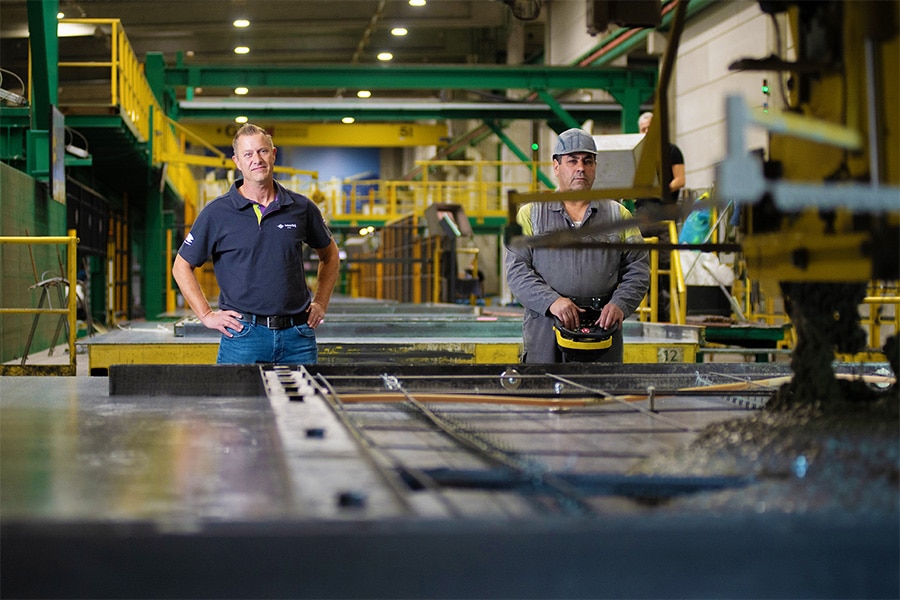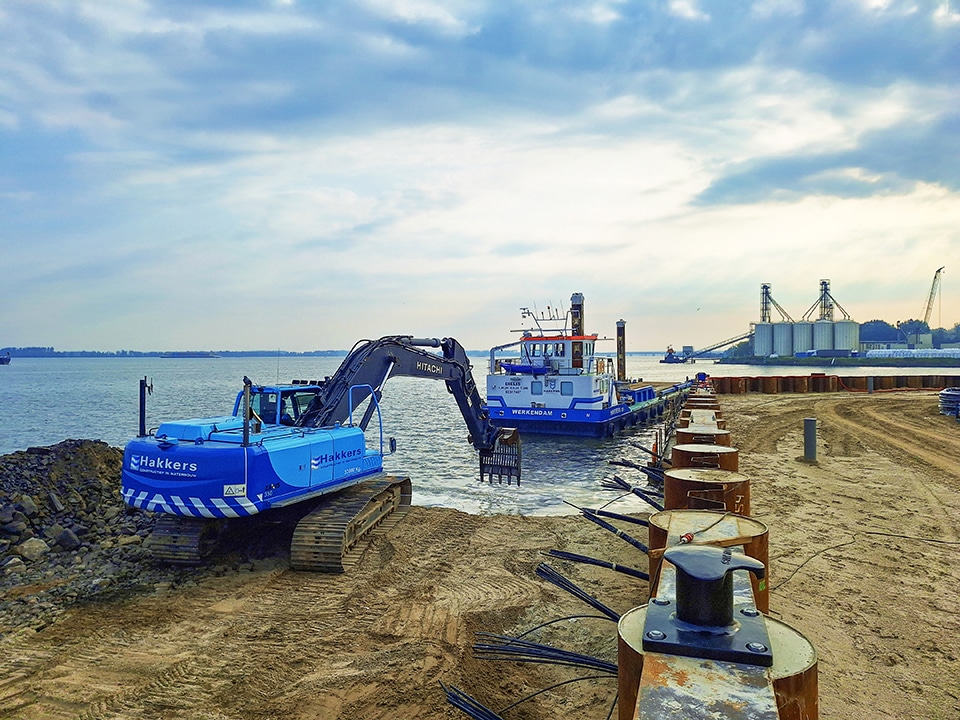
String anchors of 70 meters stabilize quay wall
Moerdijk multimodal terminal
In early 2025, the Van der Vlist Transport Group in Moerdijk will have a fully operational new multimodal terminal. In addition to a large hall and offices, the terminal will include a large transshipment area with no less than 650 meters of quayside on the Hollands Diep and on the Roode Vaart dock. This provides Van der Vlist with a significant expansion in its capacity for mooring inland and seagoing vessels. The quay was constructed by Gebr. De Koning, with Hakkers Funderingstechniek being subcontracted to provide the quay wall with solid anchoring. Unusual anchor lengths of up to 70 meters were used.
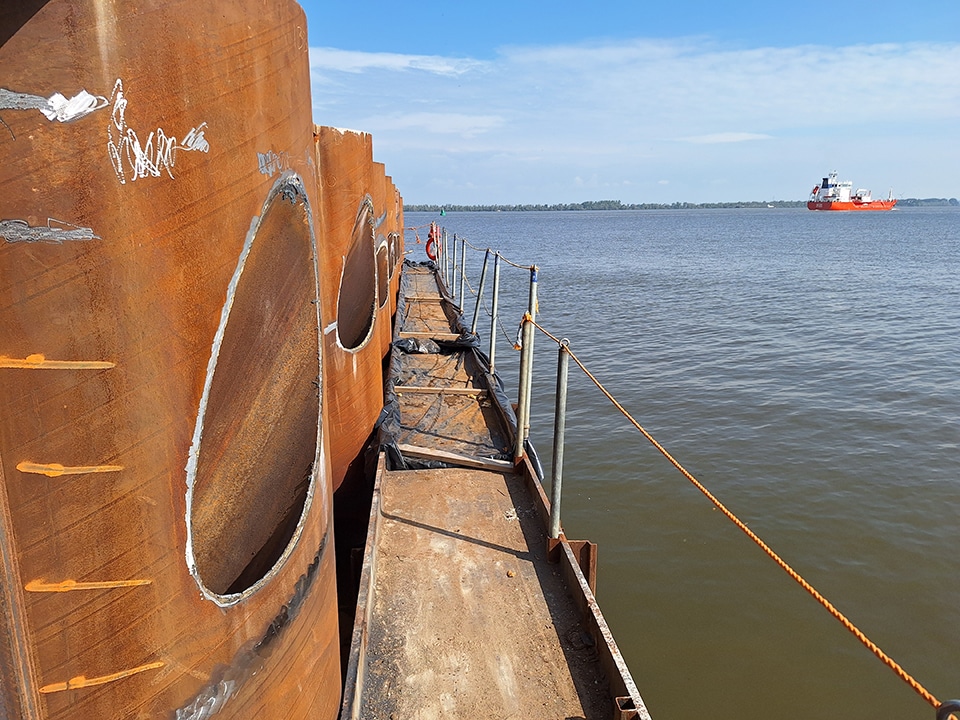
For Van der Vlist Transportgroep, the Moerdijk location is a strategically positioned hub that offers congestion-free connections to the hinterland via both rail and water. The service package is primarily focused on the construction and energy sectors. That means the storage and transshipment of project cargo such as wind turbine components, large(er) structures and rolling stock. "The quay must be able to cope with that," says Arnoud Hoeve, Head of Acquisition Foundation Technology at Hakkers Funderingstechniek. "This is where the most modern machines with heavy loads will soon drive around and where large mobile cranes are set up for loading and unloading them. This required extra attention to the construction and anchoring of the quay. This also ends in a blunt point, which required a separate approach for anchoring this part of the quay."
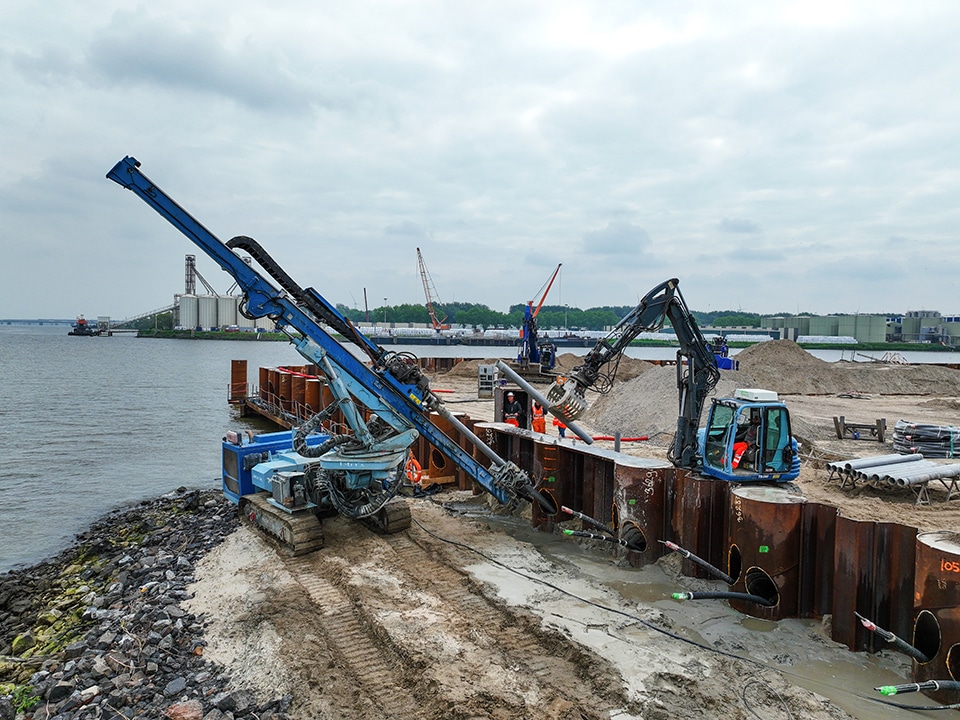
Optimize
Gebr. De Koning designed and executed the quay as an anchored combi wall construction consisting of tubular piles and sheet piling. "We became involved in the DO phase to optimize the design in consultation, with the goal of arriving at the most cost-effective and sustainable solution," Hoeve continued. "Gebr. De Koning placed a total of 211 tubular piles averaging 35 meters in length. The first 23 meters were vibrated with a high-frequency variable moment block, the remaining length was driven for even more bearing capacity and rigidity. We then fitted the walls with anchors, a process that began in early April. Before the construction period, the last anchor was in place; by mid-September all anchors were pre-tensioned."
Double anchors
Before it came to that, some water had to flow through the Hollands Diep. "During the design phase - in addition to the basic variant with two strand anchors per tube pile - we also looked at a variant of one grout injection anchor per tube pile," said Wouter de Graaf, Project Manager for Hakkers Funderingstechniek. "We often work with that because this variant can handle large loads and is quicker to install. For reasons including cost and sustainability, it was decided to elaborate the basic design with double strand anchors drilled into the ground at an angle of 40° to 45°. Lengths of 50 to 70 meters were used to obtain the desired tensile strength. These are exceptional dimensions that we have not applied to strand anchors before."
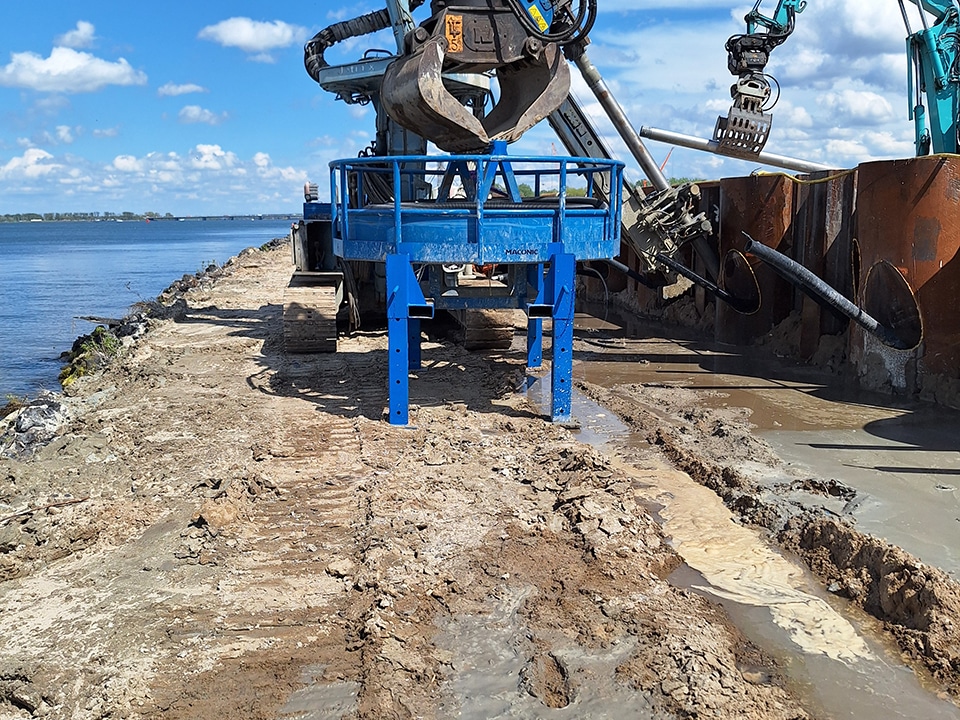
Tangled
Another challenge was the obtuse spur of the quay wall. De Graaf: "That caused us some headaches, because the anchors got mixed up or even protruded through the sheet piling. This was solved by driving an extra sheet pile about twenty meters behind the quay and connecting it to the quay wall with laying anchors. Combined with the strand anchors, you do get a tangle of steel, but by varying the angle slightly and drilling accurately, everything is now neatly in place."
Work platform
The anchors were installed using a Klemm 807-7GP anchor drill from a six- to 10-meter-wide work platform that ran a few meters down the outside of the quay. De Graaf: "To handle the exceptionally long strands in a fast and safe way, we made an XL strand reel especially for this job. The blunt spur of the quay wall was drilled from one of our own self-propelled work vessels. The work platform has now been excavated so that client ships can soon dock. Now the quay really works as a retaining wall."
Future
The experiences of the work in Moerdijk are positive. Hoeve concludes, "First of all, the cooperation with Gebr. De Koning in both the design phase and during execution was constructive and pleasant. We speak the same language and that leads to the best results. By using strand anchors, a considerable amount of steel was saved on this project, which is certainly relevant in the context of making projects of this size more sustainable."
